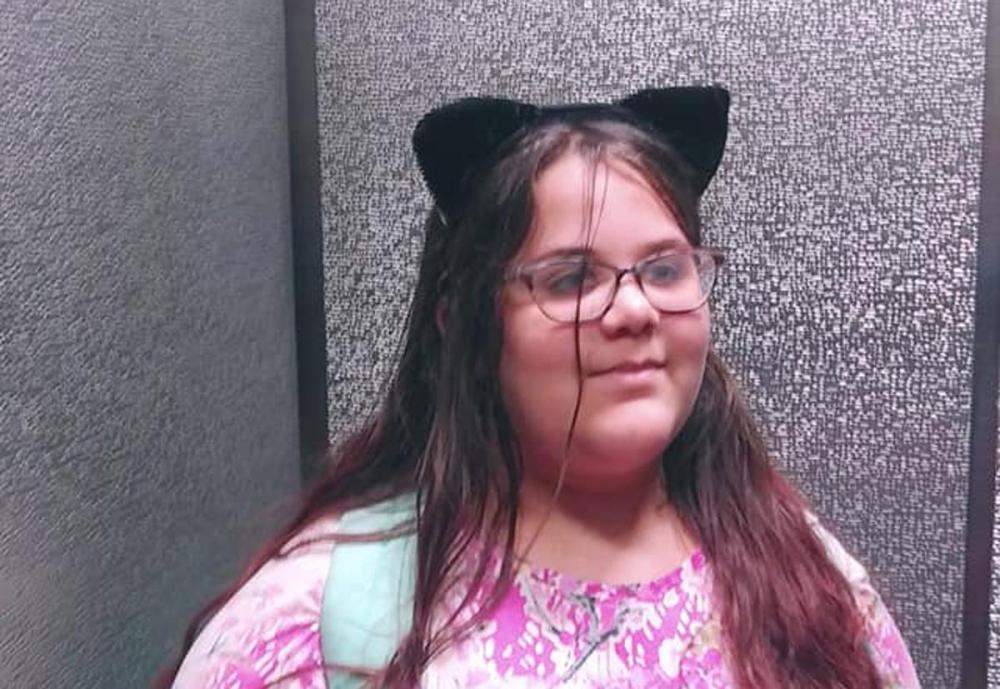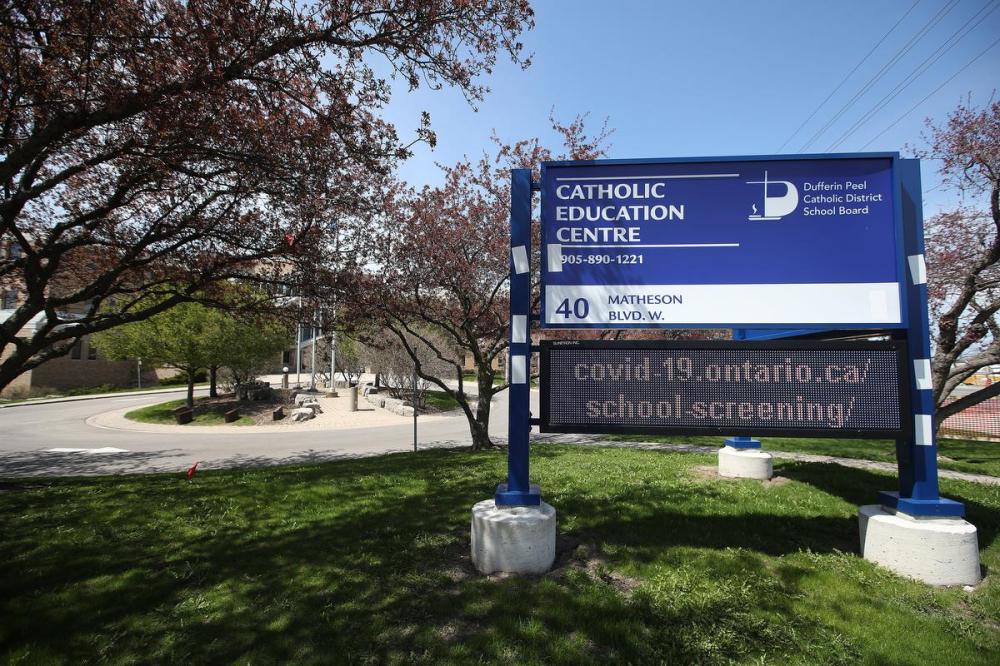The death of Emily Viegas, 13, from COVID is a personal tragedy and a systemic failure
Advertisement
Read this article for free:
or
Already have an account? Log in here »
To continue reading, please subscribe:
Monthly Digital Subscription
$1 per week for 24 weeks*
- Enjoy unlimited reading on winnipegfreepress.com
- Read the E-Edition, our digital replica newspaper
- Access News Break, our award-winning app
- Play interactive puzzles
*Billed as $4 plus GST every four weeks. Offer only available to new and qualified returning subscribers. Cancel any time.
Read unlimited articles for free today:
or
Already have an account? Log in here »
Hey there, time traveller!
This article was published 26/04/2021 (1409 days ago), so information in it may no longer be current.
So a 13-year-old girl died, and nobody wants to argue about the politics. Not now, and not ever.
But in a pandemic, it’s hard to avoid. The story is easy to understand and so very difficult to read: 13-year-old Emily Victoria Viegas died last Thursday in the bedroom she shared with her brother in a two-bedroom apartment in Brampton, in Peel, where her father worked in a warehouse. Her father was the only one in the family of four who didn’t test positive for COVID-19; her mother was in the ICU.
Even after this past year, it’s hard to find any words at all. It’s hard, to be honest, not to cry.

I could tell you this tragedy is the story of Peel, and Brampton most of all.
“We know that it has been a story of inequity and disparity,” says Dr. Lawrence Loh, the medical officer of health for Peel. “This is a region that welcomes our newest Canadians, welcomes many racialized Canadians, and those who are economically and socially vulnerable by virtue of the employers and employment profile of the community.
“Our third wave started later because we stayed in the stricter measures a little longer, us and Toronto. But throughout this entire pandemic, that plateau that we had from November until about February, those are people who can’t work from home. Those are the people that we’re talking about, that has been our entire story this entire pandemic, that I have been basically firing all cylinders on.”
“Brampton has been left to burn,” says Dr. Brooks Fallis, an ICU doctor who was head of critical care for William Osler for most of the pandemic, largely in Brampton, but who had no direct contact with this case.
I could tell you Peel is full of warehouses and factories and people who need the paycheque every day, and because workers need paycheques every day they show up sick: in a Peel Public Health survey of nearly 8,000 workers earlier in the year, a quarter of workers had gone to work with symptoms. I could tell you the province’s website still says you don’t need to be masked if you’re six feet apart indoors. That’s wrong.
I could tell you that after a year of refusing to even consider it, Premier Doug Ford recently vowed his government would come up with the best paid sick days program in the country to fix the federal sick leave program which, until recently, Ontario used as the excuse not to implement paid sick days at all.
I could tell you Peel has the highest COVID case rate in the country. Toronto, next door, is third.
I could tell you the U.K. variant is dominant here and produces a 40 per cent higher rate of transmission, twice the chance of sending you to the ICU, and a 40 per cent higher chance of death. But you still might not feel like you need to go to hospital: reportedly, Emily didn’t feel so bad, and her dad was afraid to take her to hospital partly because she might be moved to another one, which is happening because some hospitals are in constant danger of overload.
“Severity of illness and symptoms don’t always match with COVID,” says Fallis. “People can be severely hypoxic without realizing it; I had a mid-30s guy who said he felt horrible, and so weak he could barely sit up in bed. But he didn’t know his oxygen saturation was at 30 per cent, because he was only slightly short of breath.
“This is a different disease.”
I could tell you the problems are systemic. Peel receives the lowest public health unit funding in the province per capita, and was barely included in the pharmacy vaccine program rollout before it was partially fixed, and was getting fewer vaccines per capita than its population, much less its case rate, until recently. I could tell you the province, which sometimes reacts to pressure but always too late, has finally said it will consider allocation of more than 25 per cent of Pfizer shipments to the hardest-hit areas: Peel, Scarborough, Toronto’s northwest corner. It would be late and reactive, like every other thing this government does. But it would finally be closer to right.
I could tell you the province is still trying to blame travel, but the problems in Peel are neither new nor unknown, have been held down by Loh’s defiance of the province on more than one occasion, and could have been controlled. You can blame the federal government for not being better at the border, and demand it be better. That’s not arguable.

But one level of government had its hands on the wheel for this, and Ontario chose a third wave, and Peel has indeed been left to burn. The U.K. controlled its own variant with public health measures before vaccines kicked in, and Ontario didn’t. As Solicitor General Sylvia Jones said in an accidentally honest CBC interview, we wanted to make sure the modelling was actually showing up in hospitals.
Emily Victoria Viegas died before she got to the hospital, and had pneumonia, too. A rare, terrible case.
“Complications and certainly death from COVID-19, in younger patients and particularly children, is certainly exceedingly uncommon,” says Dr. Andrew Healey, the chief medical director at William Osler Health Systems. “But when the number of cases are growing, and the number of cases that exist are large, we are going to see events in all age groups. Even if it is rare, if you have thousands of cases, you will see rare cases come into the emergency department.”
That’s it: enough cases, and more awful things happen. In this pandemic Ontario has decided to leave the people who couldn’t protect themselves exposed because, as the Star’s Robert Benzie wrote, the premier is weak, and too much of the cabinet doesn’t understand science and doesn’t want to offend the stakeholders, which means business and donors. So the solution a week and a half ago was to chain up basketball hoops and tennis courts and let workers keep going to work.
Vaccines will help eventually. But in the meantime Ontario has decided to let the vulnerable suffer to keep the economic gears moving. That’s it. I don’t want to tell you any of this. We shouldn’t have to talk about it. The pandemic is a global horror, worse in many places than it is here, and this is one case.
There have been so many tragedies: mothers, fathers, brothers, sisters, daughters, sons. So I don’t know why this one is so crushing, why I’ve been blinking back tears for a full day. I keep thinking about the Globe’s Dakshana Bascaramurty writing the original story, talking to Emily’s father, carrying that. I keep thinking how she wrote that Emily died under the “Frozen” and mermaid posters in her bedroom, and that her father put his head to her silent chest. I keep thinking about my twin 11-year-olds, and my two girls who loved “Frozen,” and how one still has posters on her wall.
I keep thinking about how when Emily arrived at Brampton Civic Hospital and they tried to save her, and how the people in hospitals are trying to hard to save everyone they can, and how every day that gets harder because this province let this happen, and if you let the virus hunt enough unprotected people it might find a 13-year-old girl with pneumonia who might have trouble breathing at first, but not too bad, whose mom might be in the ICU, and whose dad might be afraid to take her to the hospital because the virus is everywhere. And she might stop breathing under the posters she loved as a child.
It is weight, and more every day. It shouldn’t have been this heavy, but here we are.
Bruce Arthur is a Toronto-based columnist for the Star. Follow him on Twitter: @bruce_arthur


